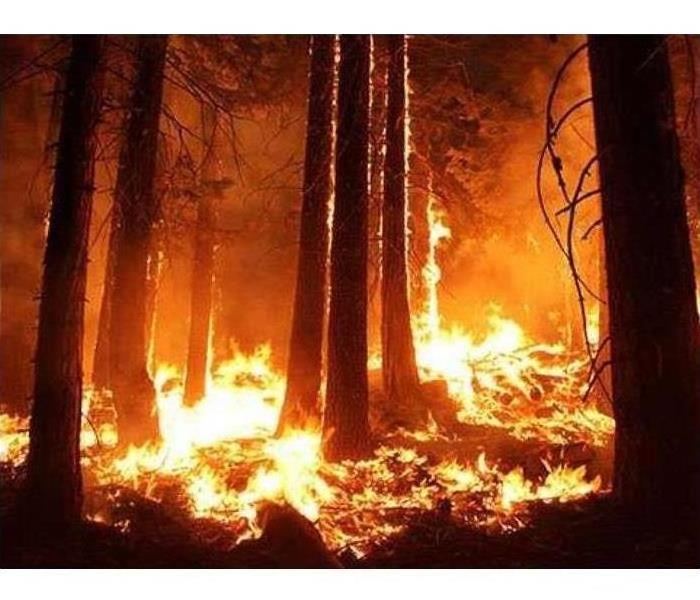Wildfires and what you need to know
9/2/2020 (Permalink)
- A wildfire is an uncontrolled fire. Wildfires often occur in wild, unpopulated areas, but they can occur anywhere and harm homes, agriculture, humans, and animals in their path.
- Firefighters also refer to these disasters as surface fires, dependent crown fires, spot fires, and ground fires. Want to make local firefighters happy -- and even better at their jobs? Bake cookies to say thanks!
- 90% of all wildfires are started by humans.
- One of the largest fires in recent history was in 1825 when a fire tore through Maine and New Brunswick, Canada, burning 3 million acres of forest.
- Weather conditions can directly contribute to the occurrence of wildfires through lightning strikes or indirectly by an extended dry spell or drought.
- Wildfires can be caused by an accumulation of dead matter (leaves, twigs, and trees) that can create enough heat in some instances to spontaneously combust and ignite the surrounding area.
- Lightning strikes the earth over 100,000 times a day. 10 to 20% of these lightning strikes can cause fire.
- Manmade combustions from arson, human carelessness, or lack of fire safety cause wildfire disasters every year.
- An average of 1.2 million acres of US woodland burn every year.
- A large wildfire or conflagration is capable of modifying the local weather conditions (AKA producing its own weather).



 24/7 Emergency Service
24/7 Emergency Service
